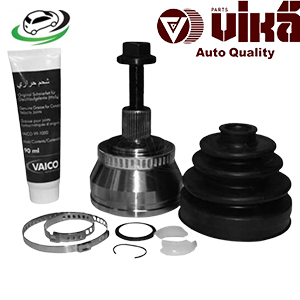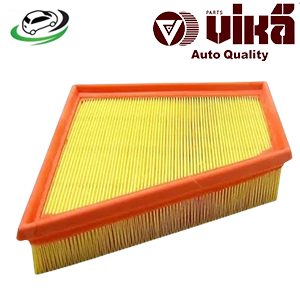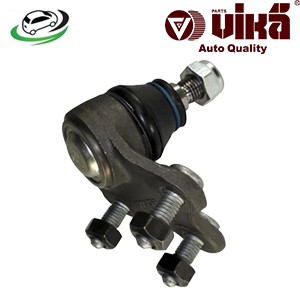-16%
Get Front Right Ball joint AUDI A1 12-2018/ VW Ameo 17-2020/ Polo 60#/ Saveiro 2010-/ Vento 60#/ Voyage 6R0407366
The ball joint is a vital component of a vehicle’s suspension system, providing a crucial link between the wheel and the chassis. It allows for smooth, controlled movement of the wheels while enabling the suspension to absorb road shocks and accommodate various driving conditions. Understanding the design, function, benefits, common issues, and maintenance of the ball joint is essential for maintaining vehicle safety, performance, and handling.
Function and Importance
- Movement Facilitation: The ball joint acts as a pivot point between the vehicle’s suspension system and the steering mechanism. It allows the wheels to move up and down while also accommodating the steering movements. This flexibility is crucial for maintaining smooth and responsive handling.
- Load Bearing: Ball joints support the weight of the vehicle and the forces generated during driving, including braking, acceleration, and cornering. They need to be strong and durable to handle these stresses without failure.
- Steering Control: By providing a flexible connection between the steering system and the wheels, the ball joint ensures precise steering control. This contributes to stable handling and accurate response to steering inputs.
- Ride Comfort: The ball joint helps absorb road shocks and vibrations, contributing to a smoother and more comfortable ride. It works in conjunction with other suspension components to manage the impact of road imperfections.
Design and Construction
- Components:
- Ball: The ball is a spherical metal component that fits into a socket. It provides the pivot point around which the suspension and steering movements occur.
- Socket: The socket, or housing, encloses the ball and is typically made from hardened steel or aluminum. It is designed to accommodate the ball’s movement while providing support and stability.
- Boot or Dust Cover: A rubber or polyurethane boot covers the ball joint, protecting it from dirt, debris, and moisture. It also retains the lubricating grease necessary for smooth operation.
- Types of Ball Joints:
- Upper Ball Joint: Located at the top of the suspension system, it connects the control arm to the steering knuckle. It is often found in vehicles with independent front suspension systems.
- Lower Ball Joint: Positioned at the bottom of the suspension system, it connects the lower control arm to the steering knuckle. It supports the vehicle’s weight and is critical for load-bearing.
- Material and Construction: Ball joints are typically made from high-strength steel or aluminum alloys to withstand the forces and stresses of driving. The ball and socket are precision-machined to ensure proper fit and function. The boot or dust cover is made from flexible and durable materials to provide effective protection.
Benefits
- Enhanced Steering Precision: The ball joint provides precise control of steering movements, contributing to accurate handling and responsive steering. This improves overall vehicle stability and maneuverability.
- Improved Ride Quality: By absorbing road shocks and vibrations, the ball joint helps enhance ride comfort. It minimizes the impact of road imperfections and contributes to a smoother driving experience.
- Durability: High-quality ball joints are designed to be durable and long-lasting. They can handle the stresses of driving and support the vehicle’s weight effectively.
- Safety: Properly functioning ball joints are essential for safe vehicle operation. They ensure that the suspension and steering systems work correctly, preventing potential issues such as alignment problems or unstable handling.
Common Issues
- Wear and Tear:
- Ball Joint Wear: Over time, ball joints can wear out due to constant movement and stress. This wear can lead to a loose or unstable connection, affecting handling and ride quality.
- Socket Degradation: The socket or housing can also degrade, leading to increased play or movement in the ball joint.
- Boot Damage:
- Tears and Cracks: The boot protecting the ball joint can become damaged due to road debris, heat, or aging. Tears or cracks can allow contaminants to enter the joint, leading to accelerated wear.
- Grease Leakage: Damage to the boot can result in grease leakage, reducing lubrication and increasing the risk of joint failure.
- Noise:
- Clunking or Rattling: Worn or damaged ball joints can produce clunking or rattling noises, especially when driving over bumps or making turns. These noises can indicate that the joint is failing.
- Handling Issues:
- Steering Problems: A failing ball joint can cause problems with steering, such as excessive play, wandering, or difficulty maintaining a straight line.
- Alignment Issues: Ball joint wear can affect wheel alignment, leading to uneven tire wear and poor handling.
Maintenance and Inspection
- Regular Inspections:
- Visual Check: Regularly inspect the ball joints for signs of wear or damage. Look for any visible cracks, tears, or leakage in the boot. Check for excessive play or movement in the joint.
- Grease Levels: Ensure that the boot is intact and that there is adequate grease in the joint. Inspect for any signs of grease leakage or contamination.
- Listen for Noises:
- Auditory Clues: Pay attention to any unusual noises coming from the suspension area, especially when driving over bumps or turning. Clunking or rattling noises can indicate a problem with the ball joint.
- Check Handling and Steering:
- Driving Experience: Monitor the vehicle’s handling and steering response. If you notice any changes in steering precision, stability, or ride comfort, it may be a sign of ball joint issues.
- Professional Inspection:
- Mechanic’s Assessment: If you suspect a problem with the ball joints or experience handling issues, seek professional assistance. A mechanic can perform a thorough inspection and diagnose any problems with the ball joints or related components.
Replacement and Repair
- Ball Joint Replacement:
- Replacement: If a ball joint is found to be worn or damaged, it typically needs to be replaced. This involves removing the old ball joint and installing a new one. Ensure that the replacement joint matches the vehicle’s specifications.
- Cost Considerations: Ball joint replacement can be a significant repair cost, but it is essential for maintaining safe and reliable vehicle operation.
- Boot Replacement:
- Boot Repair: In some cases, a damaged boot can be replaced without replacing the entire ball joint. However, if the joint is already worn, replacement of the entire ball joint may be necessary.
- Sealing and Greasing: When replacing a boot, ensure that the joint is properly cleaned, greased, and sealed to prevent future issues.
- DIY vs. Professional Help:
- DIY Repairs: Replacing a ball joint can be a complex task that requires special tools and expertise. For those with automotive experience, it may be a feasible DIY project.
- Professional Assistance: For most vehicle owners, seeking professional assistance is advisable. A mechanic can ensure proper installation and alignment, preventing potential issues.
Follow us on Facebook for more parts.



